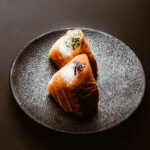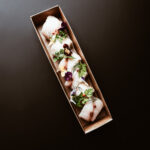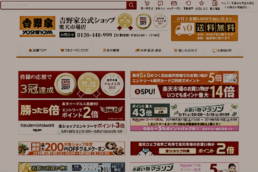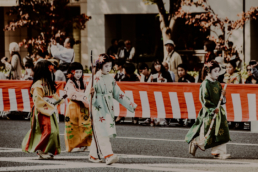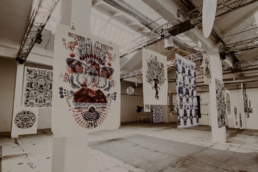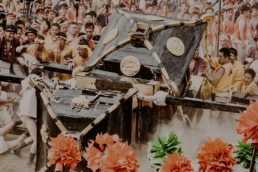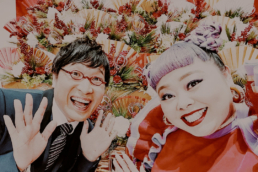TENOHA MILANO: Take Away & Delivery
The TENOHA Milano delivery and take away is finally ready! The password is #TENOHAATHOME! Were you afraid to remain without imaginary traditional Japanese dishes?
TENOHA Milano opens at Take Away and Delivery
Author: SaiKaiAngel
Obviously, the best corner of Japan in Italy will not leave you alone and here is ready both the delivery and the TAKE AWAY of TENOHA Milano!
TENOHA &| TASTE
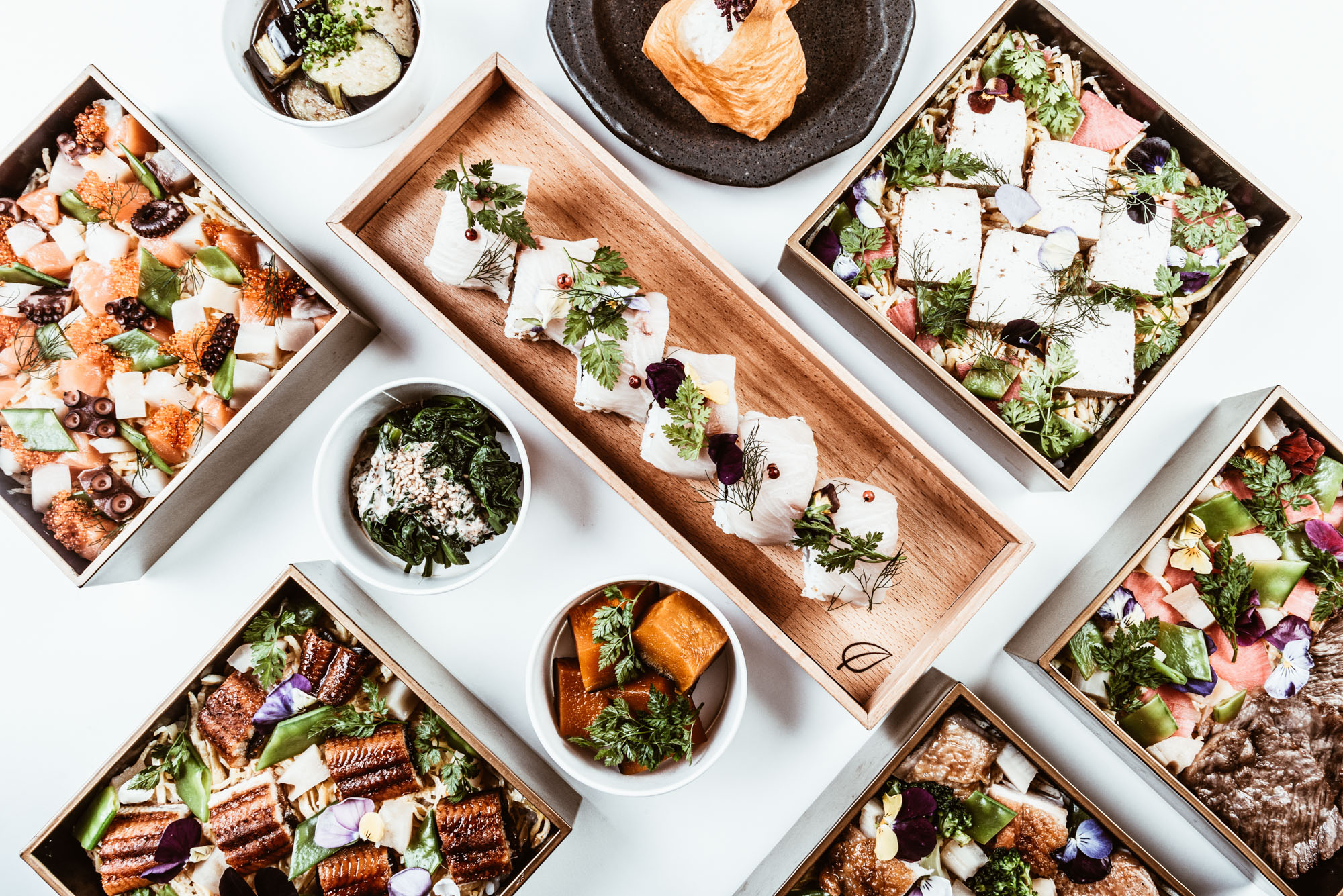
CHIRASHI SUSHI
Let's start with this speciality: a box of rice seasoned with vinegar and a dish of your choice:
KAISEN: Fish as the protagonist: salmon, amberjack, octopus, flying fish eggs, omelette, jackdaws, lotus roots in vinegar and dill.
UNAGI: the famous eel from TENOHA Milano grilled with mirin sauce, sake, soy sauce, omelette, jackdaws, pickled lotus roots and... wonderful edible flowers!
WAGYU: incredible but true, to delight us at this moment there is the much desired Wagyu! The best meat in the world at TENOHA Milano. We are talking about the sirloin of Wagyu A5 from Kagoshima grilled with dashi sauce and soy sauce, omelette, their roots in vinegar and still edible flowers.
TERIYAKI: could not miss the wonderful chicken in teriyaki sauce, with an omelette, broccoli, jackdaws and edible flowers.
TOFU: for those who want an all-vegetable version there is grilled and marinated tofu in soy sauce, garlic and ginger.
SPECIAL FROM HIROSHIMA
OKONOMIYAKI - The famous Japanese dish available for you, directly from Hiroshima! Japanese spaghetti, pork bacon, cabbage, spring onions and okonomiyaki sauce
In addition to all this, you can also find the rest of the TENOHA menu at this link for delivery.
For the Take Away you can call TENOHA directly, below you will find all contacts.
#TENOHAATHOME : Take Away | Tel. (+39) 02 8088 9868
OPENING HOURS:
Monday - Wednesday - Thursday - Friday
Lunch 12:00 - 15:00
Dinner 17:30 - 21:30
Saturday - Sunday
12:00 - 21:30 continuous time
*Closed Tuesday
TENOHA &| RAMEN
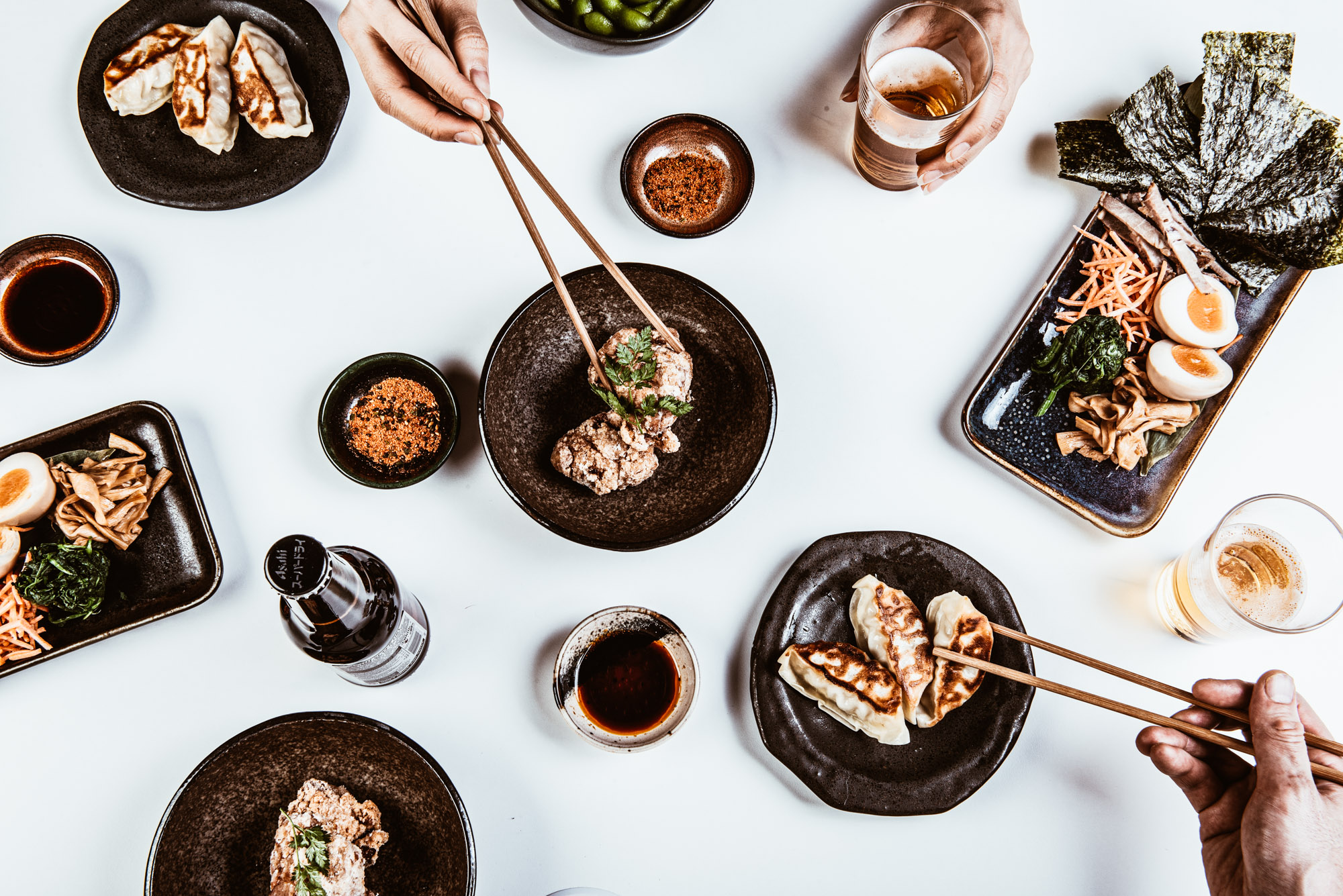
Even TENOHA &| RAMEN is close to you, even at home and adheres to #TENOHAATHOME! The takeaway and delivery is ready for you with lots of news! In addition to the menu of TENOHA Ramen which you can consult here, there are other formulas not to be missed! Three absolutely new and always so much Japanese sets.
IZAKAYA APERITIVO SET
Asahi
Edamame
Karaage
Yaki Gyoza
OTSUMAMI TEMAKI
Cost 18 €
IZAKAYA RAMEN SET (SHOYU)
Asahi
Edamame
Karaage
Yaki Gyoza
SHOYU RAMEN
Cost 23 €
IZAKAYA RAMEN SET (MISO)
Asahi
Edamame
Karaage
Yaki Gyoza
MISO RAMEN
Cost 28 €
Japan Italy Bridge's advice about the TAKE AWAY menu and delivery : 3 of the best of TENOHA Ramen, tell us as always if you agree with us or your best are other dishes of the vast menu!
SHOYU RAMEN | 醤油ラーメン - Perhaps the most popular: ramen in chicken broth-based on soya, served with a slice of braised pork, spinach, marinated egg, bamboo, spring onions,
nori seaweed and soy sprouts
MISO RAMEN | 味噌ラーメン - a classic not to be missed: ramen in miso chicken broth, served with braised pork, marinated egg, spinach, bamboo, spring onions, carrots,
nori seaweed and soy sprouts
VEGAN | ビーガンラーメン - a speciality of our great chef Itakura: ramen in vegetable broth, sesame cream and soy milk served with fried tofu, bamboo, spring onions, fried sweet potatoes.
Plus you will always find the various wonderful POKÈ DON!
Don't miss the rest of the TENOHA menu at this delivery link. For the Take Away instead you can call directly to TENOHA, below you will find all the contacts:
ORDER NOW!
Tel. 02 8339 0042
TIMETABLE:
MON-WED - THU - FRI
Lunch
12:00 – 15:00
Dinner
17:30 – 21:30
Saturday - Sunday
12:00 - 21:30 continuous time
*Closed Tuesdays
Novità
"DIY RAMEN - Make your own ramen at home.
Our Chef Itakura will provide you with everything you need!
#TENOHAATHOME
TENOHA Milan is with you at all times, do not miss the opportunity to experience Japan at home with a few small steps! It will be a special moment for you and your whole family.
Business Focus: Social Media during and post the pandemic
Social media has long been an integral part of our lives, but it was during this global pandemic that we discovered how important this medium is.
The importance of social media in pandemic times
Author: Erika
The COVID-19 pandemic has completely turned our lives upside down, not only in terms of health care but especially in our daily routine. If there is anything we have learned from this situation, it is that we must be prepared for whatever the future holds. No goal is realistic, but in our plans, we must try to get as close as possible to what will be the reality.
Many are wondering what the post-COVID-19 world will be like and finding an answer is not easy. But one thing is certain, we must be ready to change and adjust our marketing strategies at any time and digital seems to be the right way to do it.
In this article, we are going to see how COVID-19 has affected the use of social media by companies.
With social distancing, digital and social media have had an impact of considerable intensity. In fact, we have seen a boom not only in messaging and video calling apps, but also all those platforms that have allowed us to make digital events.
Both in our private and working lives, our daily lives have been touched and marked by a change in many habits. However, not all the consequences have been negative.
The famous digital transformation, which was at a standstill in Italy, has accelerated considerably as a result of this global situation. Driven by the impossibility of continuing with the old methods, even the most stubborn brands have surrendered to the digital evolution of communication.
Social marketing strategies are changing

Marketing strategies have changed to adapt to new media and tools, but first and foremost the way companies communicate and relate to clients has changed.
In this pandemic period, the public has changed their needs and companies have had to learn how to relate in an advantageous way. This is why a lot of social media marketing has changed during the pandemic.
Spending much more time at home and bombarded by all this negative news, the public felt the need to feel connected to the world in some way. This is one of the fundamental aspects that has allowed companies to take advantage of the opportunities and offers related to digital transformation.
For those of us who are involved in marketing, you will have noticed that the publication times of the posts have been completely overturned. The COVID-19 has shuffled its cards around a lot, and if you used to prefer to post on socials on specific days during the lunch break, now this period has been extended to all weekdays. Instead, what we call "commuter time" has taken a back seat, so from 5 pm onwards socials are now less popular.
Whereas before the weekend was one of the worst times to publish, now post lockdown on the morning of the weekend has become one of the most sought-after moments.
Most viewed social media during the pandemic
With forced lockdown, TV programmes suspended, news monopolised by Coronavirus news, the public desperately needs entertainment. This has caused audiences to pour into social media, particularly Instagram, YouTube and TikTok in search of distraction. For this very reason, it has become even more crucial to publish at the right time.
The volume of messages sent and received has also changed. Although for some sectors there has been a decrease in the publication of posts, for other companies the volume has remained constant or even increased.
In fact, some companies increased the number of messages addressed to the public during the pandemic. For example, the entertainment sector has increased its social media activities to provide a distraction to citizens already destroyed by social distancing.
Other companies linked to the sport and tourism sectors have been particularly affected by the restriction or suspension of all activities. And it is precisely in these sectors where there has been a decline in communication. However, this was the wrong step to take. It may seem the most logical choice to cut communication-related funds in a time of crisis like this, but in reality, it is one of the most counterproductive gestures a company can make. But we will talk about this in one of our next articles.
Social media as a tool to connect people during the pandemic


Since the beginning of 2020, we have seen how our lifestyle has changed completely by creating new rules for everyone.
In fact, many companies have found themselves having to recalibrate their strategy in light of what has happened. We have asked ourselves many times whether this content is suitable for the current situation, and many times we have found ourselves removing it. In a period like this where people are particularly sensitive to all kinds of messages, it is very important to control what is shared but even more important is to adapt to each situation.
Listening to your clients' requests and feelings and identifying their needs is fundamental nowadays in order to understand how to orient your strategy. The pandemic has created a general climate of terror and for this reason, the public is now looking for positive conversations. People have grown tired of negativity and all this concern about COVID19 and are looking for social distraction.
In March, the number of messages on the topic of helping others increased by 1.174%, culminating in 19.5 million messages during the month. In this period of insecurity, people are trying more than ever to connect and support each other. Social media has become the epicentre of this movement.
In SproutSocial's #BrandsGetReal 2019 survey #BrandsGetReal, it was found that 91% of respondents believe that social networks have the power to connect people, of which 78% would like brands to use social networks to bring them together. This sentiment became even stronger after the pandemic.
Being able to understand what your audience wants and show them that your company has understood this need is the best solution for good communication even in this strange 2020.
Business Focus: The weird world of Japanese web design
Have you ever wondered why Japanese web design is so different from that in the West?
The weird world of Japanese web design
Author: Erika
Japan Italy Bridge offers services for companies and part of our job is to create websites. "What's new" you might say, yes because there are so many agencies like us, but what makes us different from the others? Well, we have the ability to adapt the Japanese style and visual to Western-style and vice versa.
It is very, very important for every company to have a website that represents their brand. However, it often happens that the style and design we use in Italy is not really suitable for the Japanese language and people.

In fact, if we analyze even just visually the Japanese sites, the differences immediately jump out at us.
As we know, in most of the Western world, websites have a simple layout. In fact, compared to the early 2000s, we have replaced the myriad of links with relevant and concise content that quickly leads us to our goal.
However, there is also a different culture in Japan in terms of visual taste. In fact, some websites have changed very little since the early 2000s. In this respect, we can really see how different sites are overloaded with links and information. This is totally inconceivable for a Western eye, while it becomes the norm for a Japanese one.
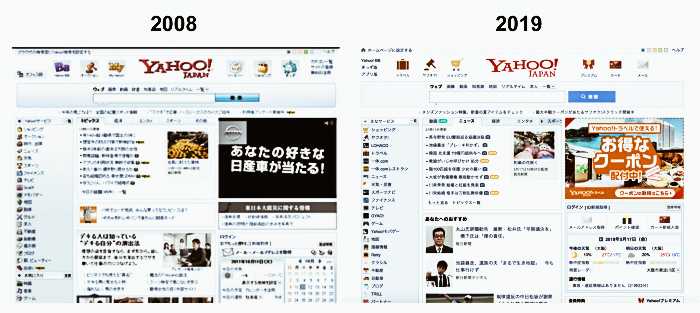
Yahoo was one of the most popular search engines in Japan and still is for many homepages. However, as you can see from the photos, its design and layout have changed very little in the last 10 years.
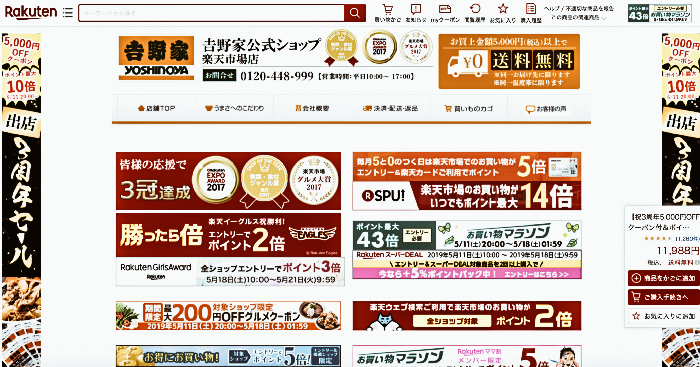
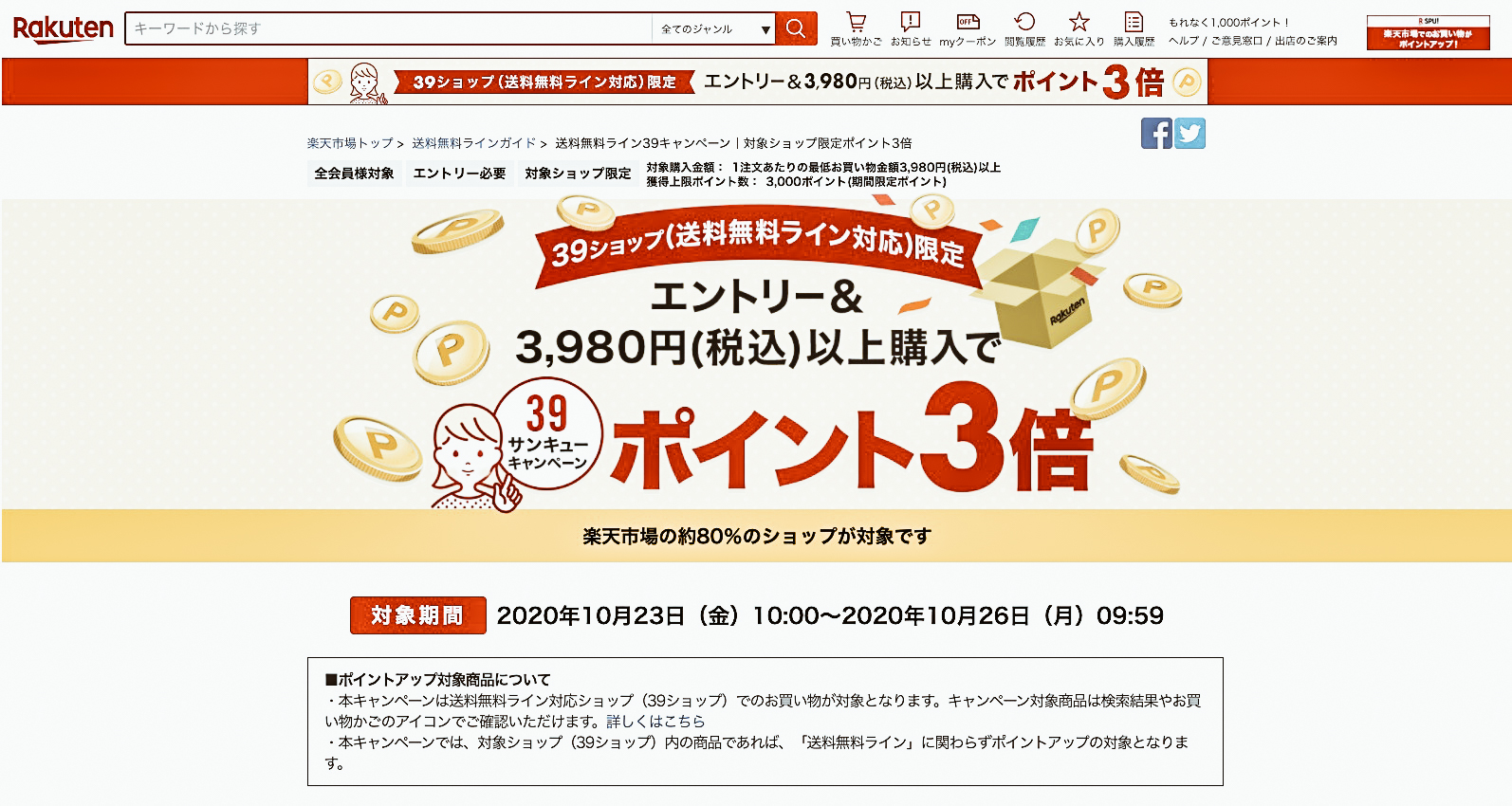
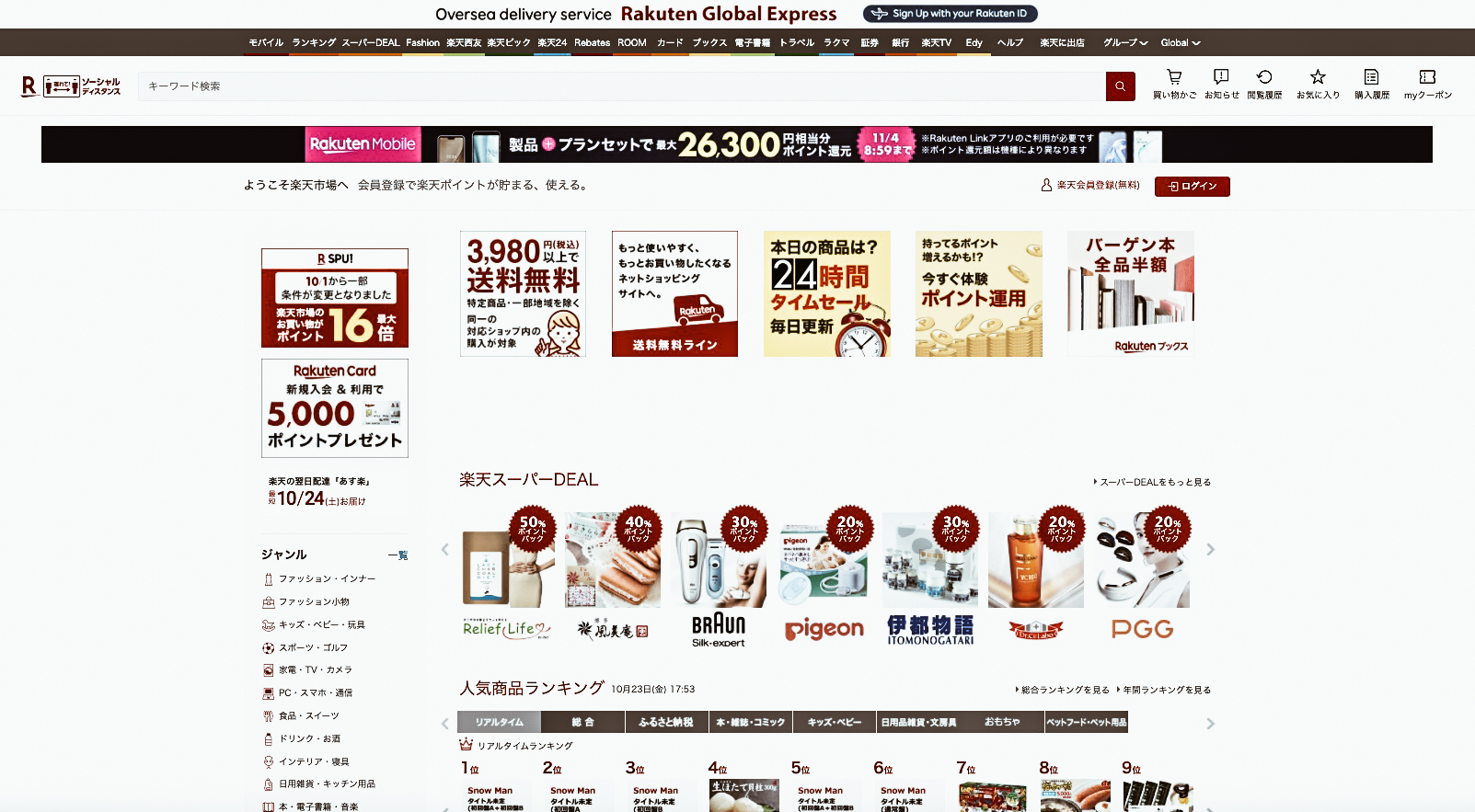
Another example is the homepage of Rakuten, the nation's largest online shopping centre.
Rakuten is the Amazon of Asia and every shopkeeper can customize their own page. This results in a large display of various images, banners and pop-ups on different pages that sometimes take a long time to scroll through.
Why is Japanese Web Design like this?
But here's the real question, why does web design in Japan have to follow these certain canons of style? The answer is simple. The majority of the Japanese people are older users who prefer to maintain the tradition. This also happens in the visual style of how websites are built and experienced.
This makes it complicated for companies to change to a style that we might call more international.
Moreover, most Japanese users use the internet via desktop and not mobile support. So even the biggest websites tend to keep the current design, also not to confuse the end-user.
Another reason why Japanese people prefer this style that we would call "old" is also because of their information culture. In fact, if you have ever been to Japan or seen some pictures of the country, you will have noticed that signs are omnipresent. The Japanese are bombarded with bright neon lights and signs that tell of shops, special offers, and occasions not to be missed. This also transpires on websites where the Japanese people prefer to have all the information immediately.
The LINE Case
When the LINE messaging app (the Japanese equivalent of Whatsapp) decided to change and simplify the layout of their homepage, the Japanese people did not take it very well. In fact, at that time, users went wild with one-star reviews and numerous requests to the company to change to the old design.
Change on the horizon
However, despite the preference for a more traditional approach, some young people in their 20s and 30s have stated that they prefer a more minimalist design.
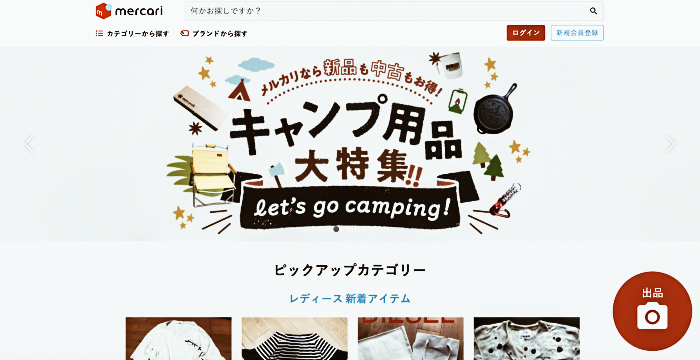
The Mercari case is in fact an example of this. We are in fact talking about a site that offers online auction services with a simple and user-friendly interface. In a short time, Mercari has taken over Yahoo Auctions, the most popular app in Japan for these services.
The history of this brand has shed light on the importance of a good UX layout, encouraging the Japanese to hire new designers on the verge of change.
Japanese companies will have to start adapting to a more modern design not only to be more attractive to a younger audience but also to become more competitive internationally.
If you liked this and our other articles, join our newsletter to receive exclusive updates and many new articles.
Jidai Matsuri
The Jidai Matsuri ( 時代祭り, literally "The Festival of Historical Epochs"), celebrated in Kyoto on October 22 of each year. This festival represents a magnificent opportunity to experience over a thousand years of Japanese feudal history as direct spectators in a single day.
Jidai Matsuri, the Festival of Historical Epochs
Guest Author: Myriam
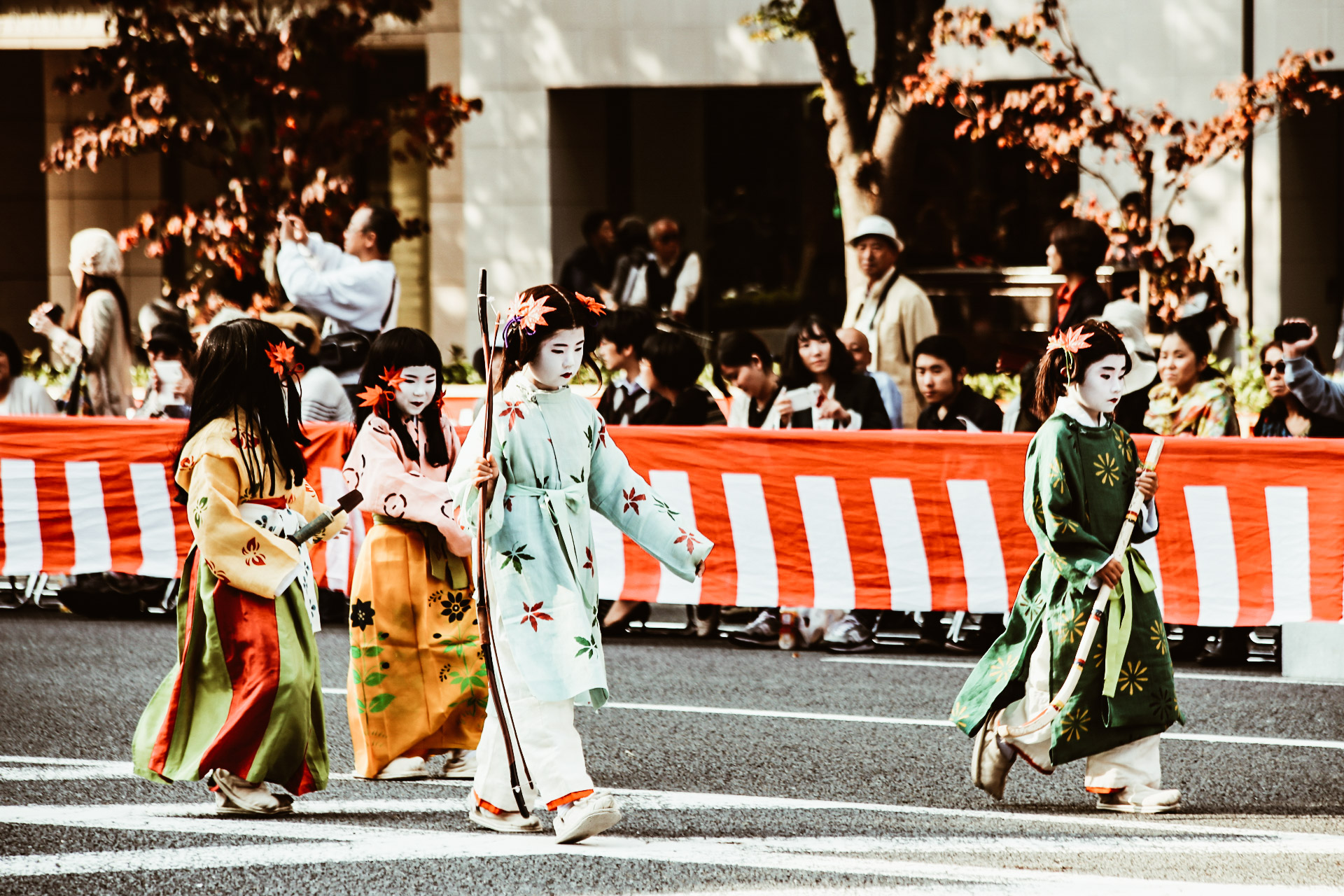
photo credits: travel-on.planet-muh.de
The origins
This festivity has its roots in the oldest history of Japan and recalls, through an impressive historical costume parade, the events and characters that have marked the life of the city since its foundation. It has been held since 794 by Emperor Kanmu (桓武天皇, Kanmu Tennō) until the transfer of the capital to Edo in 1868 by the decision of Emperor Mitsuhito.
Since its creation under the name of Heian Kyo (平安京, "capital of tranquillity and peace"), Kyoto has remained the capital of Japan almost uninterruptedly for over a thousand years. With the end of the Tokugawa Shogunate and the beginning of the Meiji Era, the entire imperial court was transferred to Edo, which became Tokyo (東京, literally "eastern capital").
In 1895 on the occasion of the 1100th anniversary of its foundation, the governments of the city and the prefecture of Kyoto established the Jidai Matsuri with the intention of restoring lustre to the ancient capital. Along with this, the aim was to honour the memory of the emperors Kanmu and Komei through the construction of the majestic Heian shrine.
A thousand years of history on the road
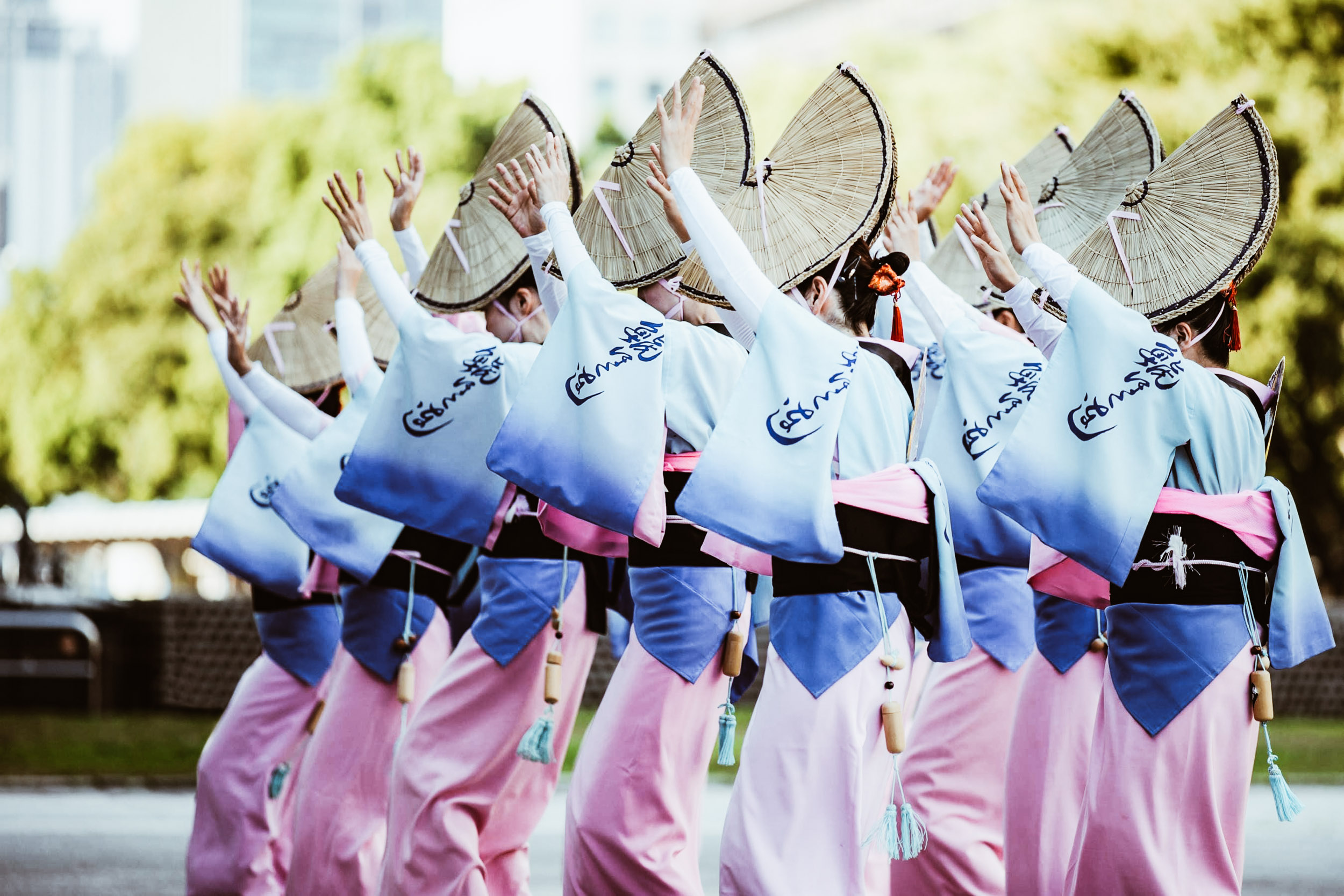
photo credits: fodors.com
Since then, on October 22 of each year, Jidai Matsuri brings back to life the splendour of feudal Japan. This allows residents and tourists to relive the life of the ancient capital for a few hours. Today, the main attraction of the festival is the Jidai Gyoretsu. It is a historical parade in which over two thousand participants take part, dressed in period costumes or in costumes meticulously reproduced by the craftsmen of Kyoto.
At the head of the parade are the mikoshi (portable sanctuaries) dedicated to the Kanmu and Komei emperors and the festival's honorary commissioners, on horse-drawn carriages in the style of the mid-19th century and from there the parade unfolds in reverse chronological order, from the Meiji Era to the Heian period, through about twenty thematic groups, which make it possible to rediscover, era after era, the characters who contributed to the history of the city, from simple peasants and soldiers to prestigious historical figures, such as the unifiers of the country Oda Nobunaga, Toyotomi Hideyoshi and Tokugawa Ieyasu, or figures of religious or cultural importance, such as Murasaki Shikibu, author of the famous "Genji Monogatari". The figures are accompanied by the music of drums and flutes, which together with the over 12,000 historical artefacts used, allow spectators to immerse themselves completely in the atmosphere of past eras.
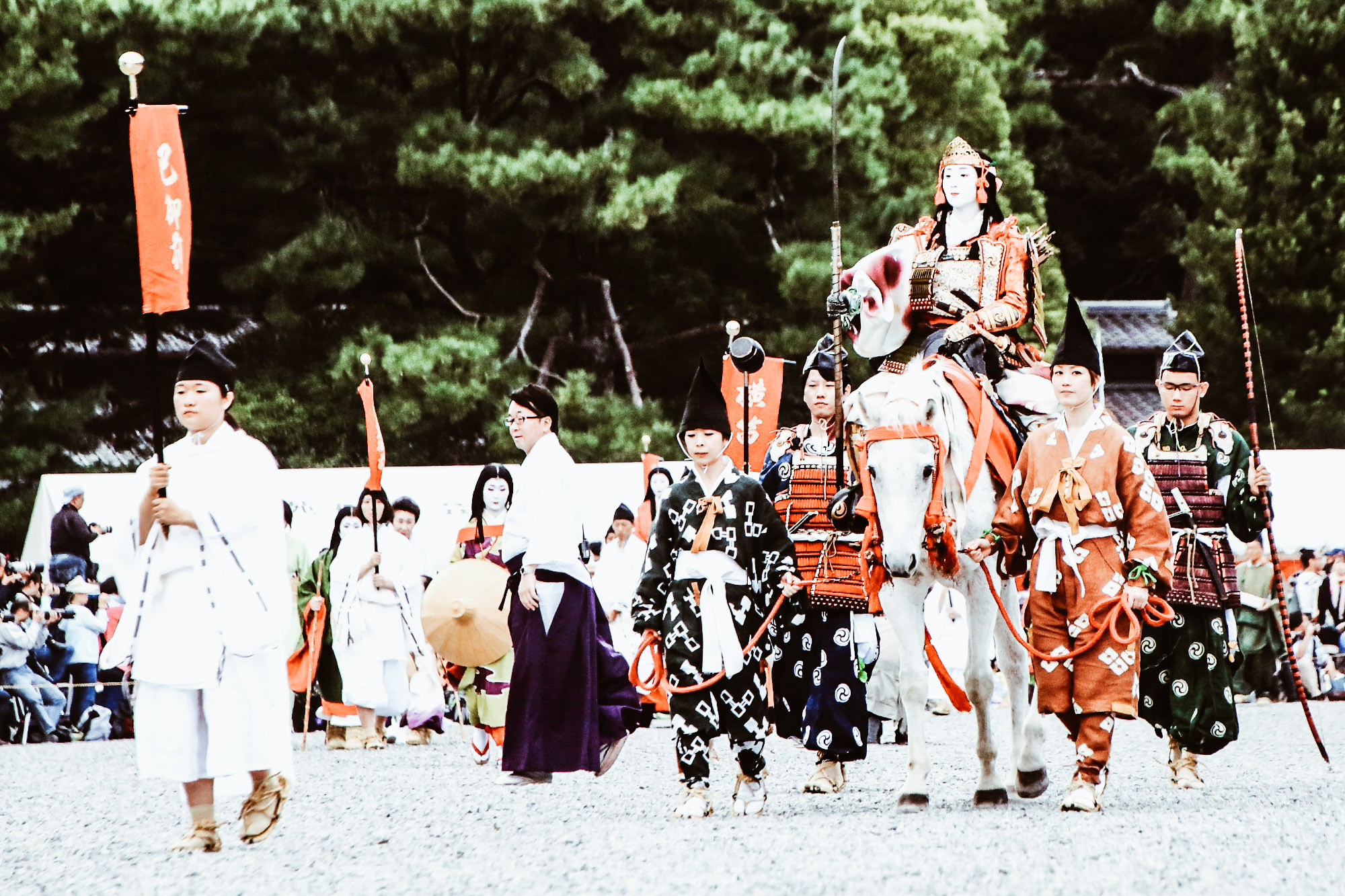
photo credits: blog.halal-navi.com
The long procession leaves at 12.00 noon from Kyoto Gosho, the imperial palace. It then winds for hours through the streets of the city centre, touching the most evocative and significant places. We see it passing by Oike and the Okazaki district, finally reaching the Heian Sanctuary. Here the Festival ends with the ceremonies foreseen by the Shinto rite.
TENOHA & | DISCOVER: Designer Tenjikai 展示会 by Lorenzo Petrantoni
This time, TENOHA Milano proposes a very special exhibition, we are talking about the works of Lorenzo Petrantoni.
Designer Tenjikai 展示会 by Lorenzo Petrantoni @ TENOHA Milano
Author: SaiKaiAngel
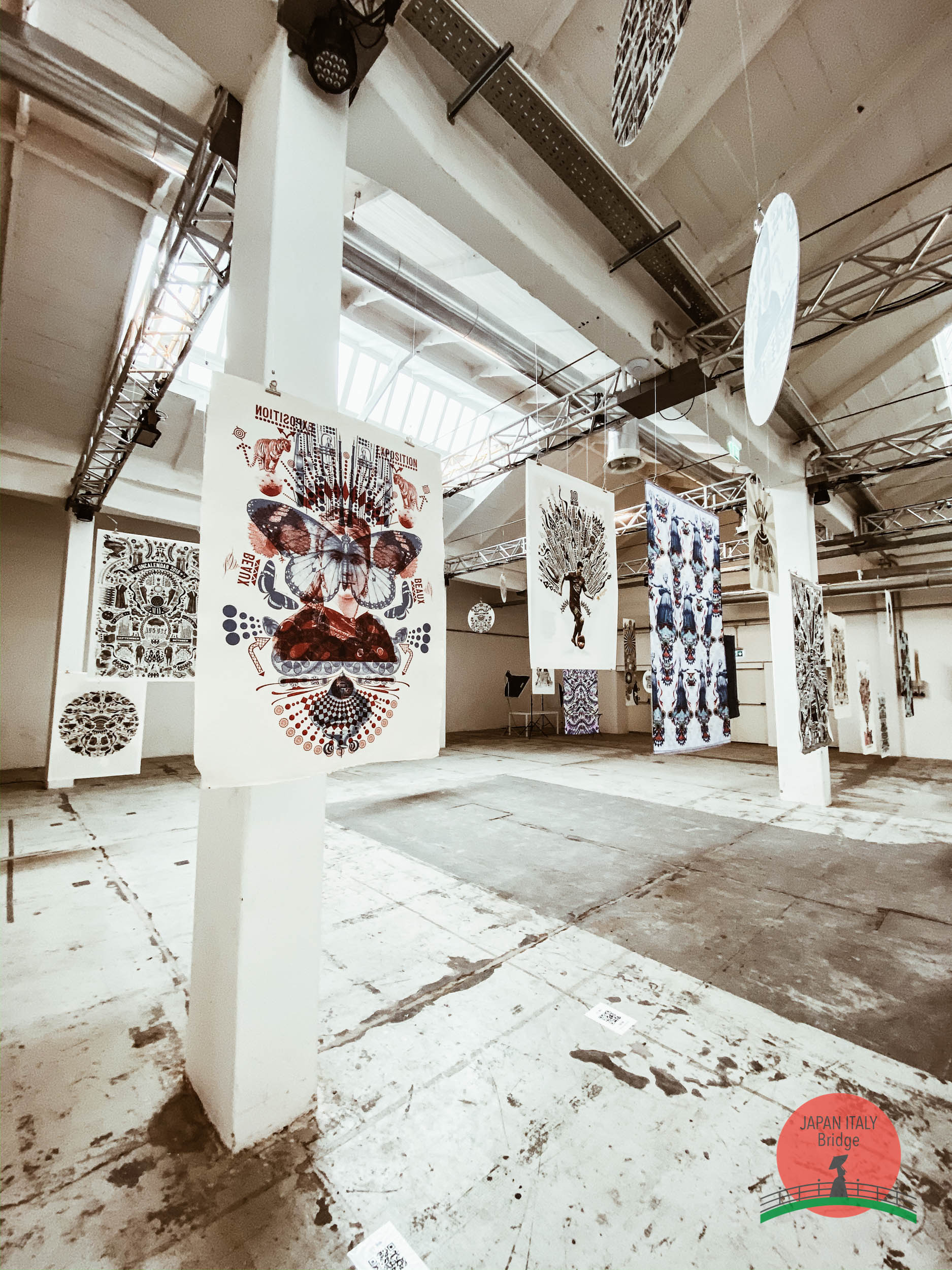
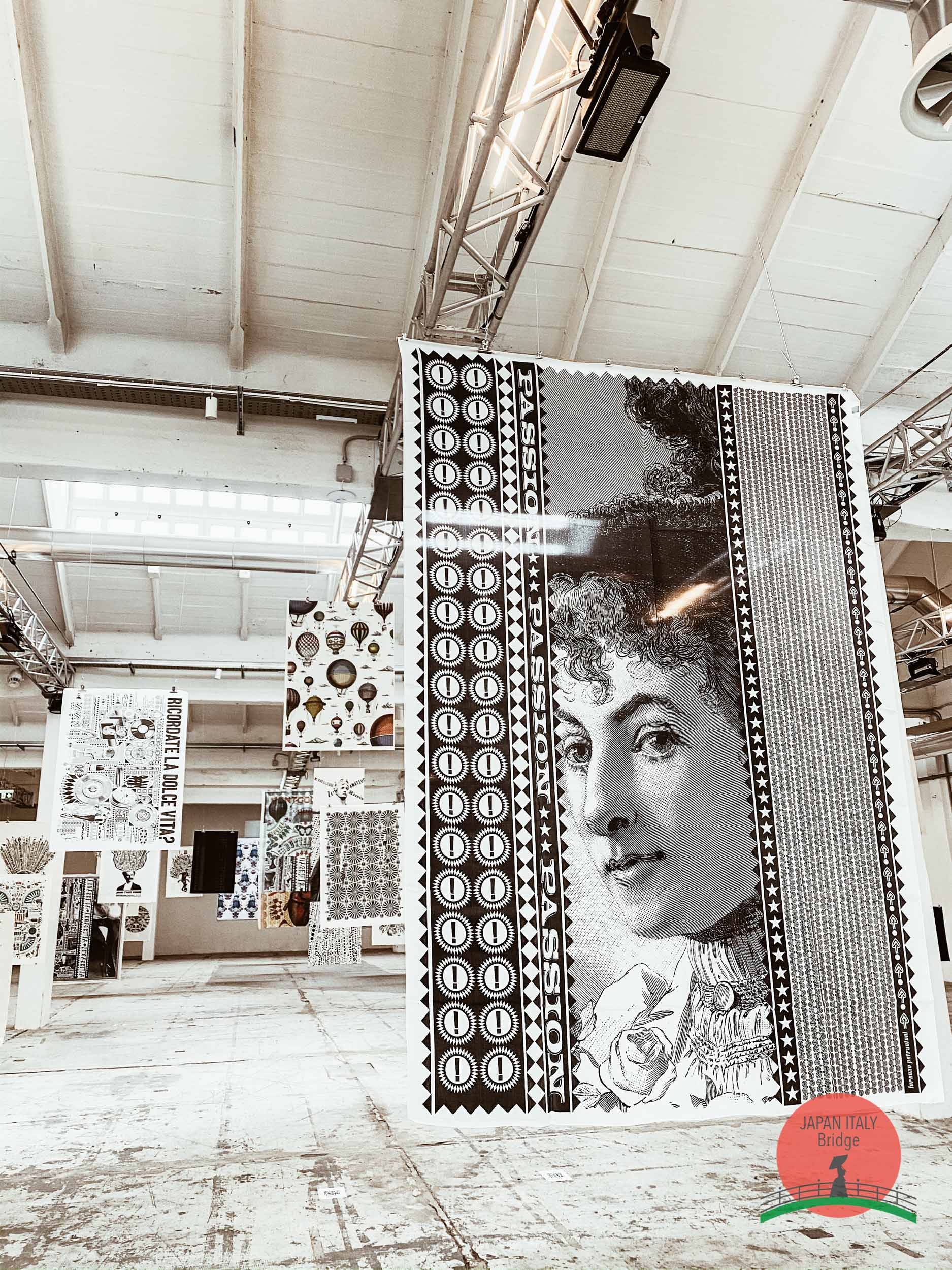
In this exhibition, Lorenzo Petrantoni, with his sophisticated technique of collage of images and words taken from 19th century books, gives life to new illustrations to celebrate the great names of Italian and Japanese design. Once again TENOHA Milano gives us the opportunity to experience Japan here in Italy.
Thanks to Lorenzo Petrantoni, we are able to experience works of great impact, such as covers of international magazines, advertising for prestigious brands, monumental installations, illustrations photocopied from books cut out and glued to compose the final collage. All his works are able to give new life and new meanings to images now forgotten in ancient volumes.
Exclusively you will have the chance to buy online one of the 50 selected works that will be sent directly to your home, you can do it by clicking this link: https://shop.tenoha.it/collections/re-vision-by-lorenzo-petrantoni.
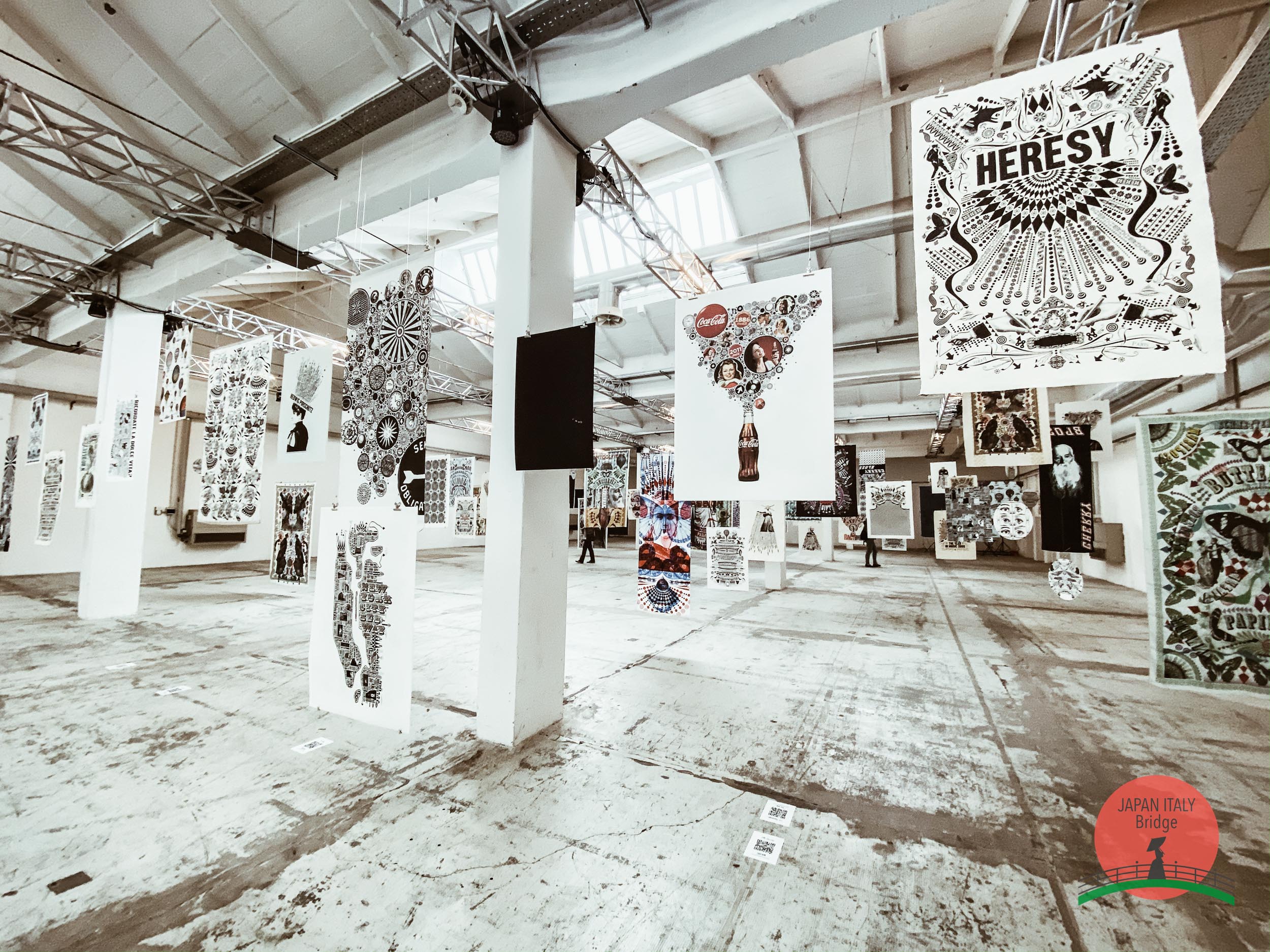
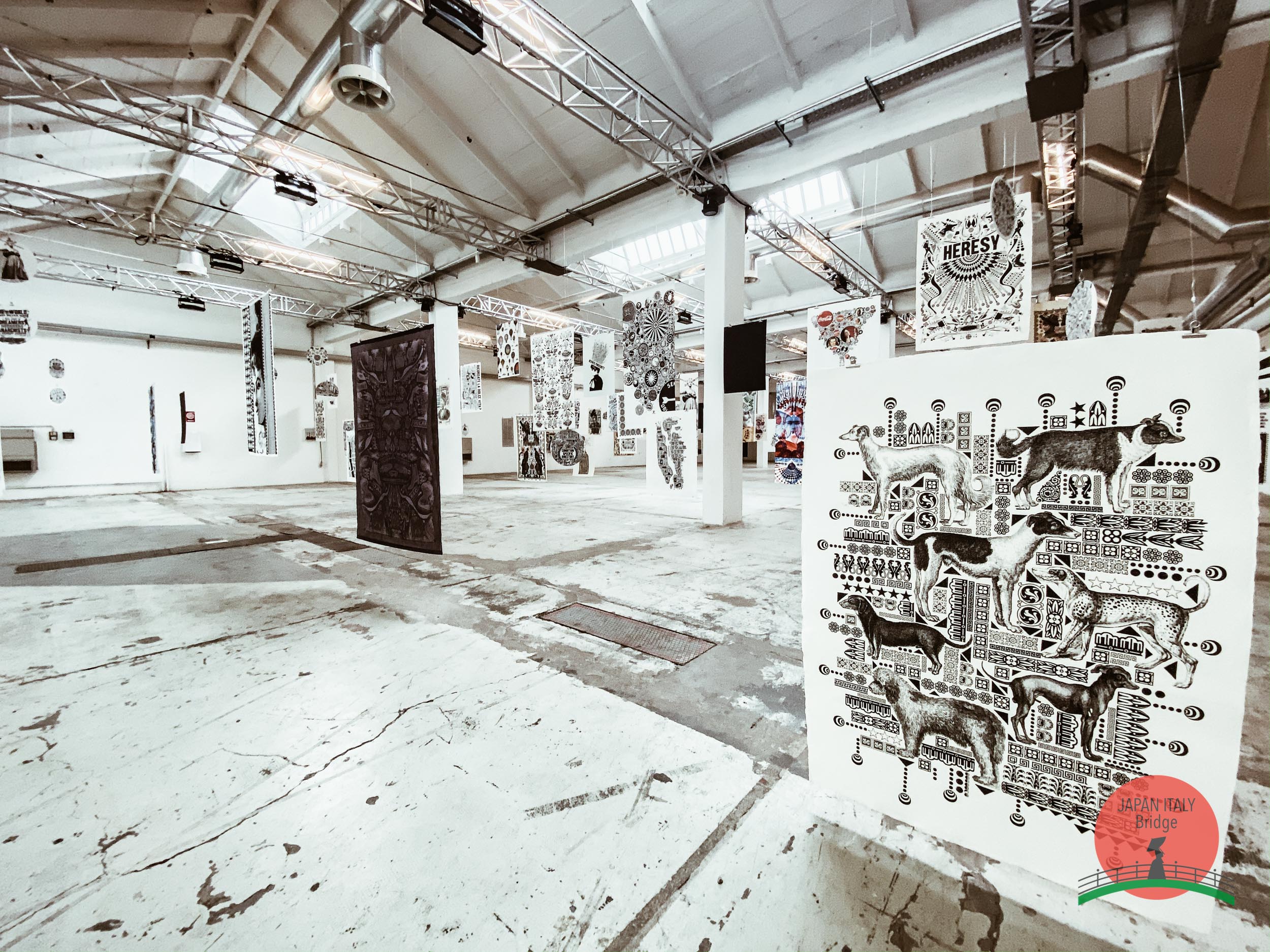
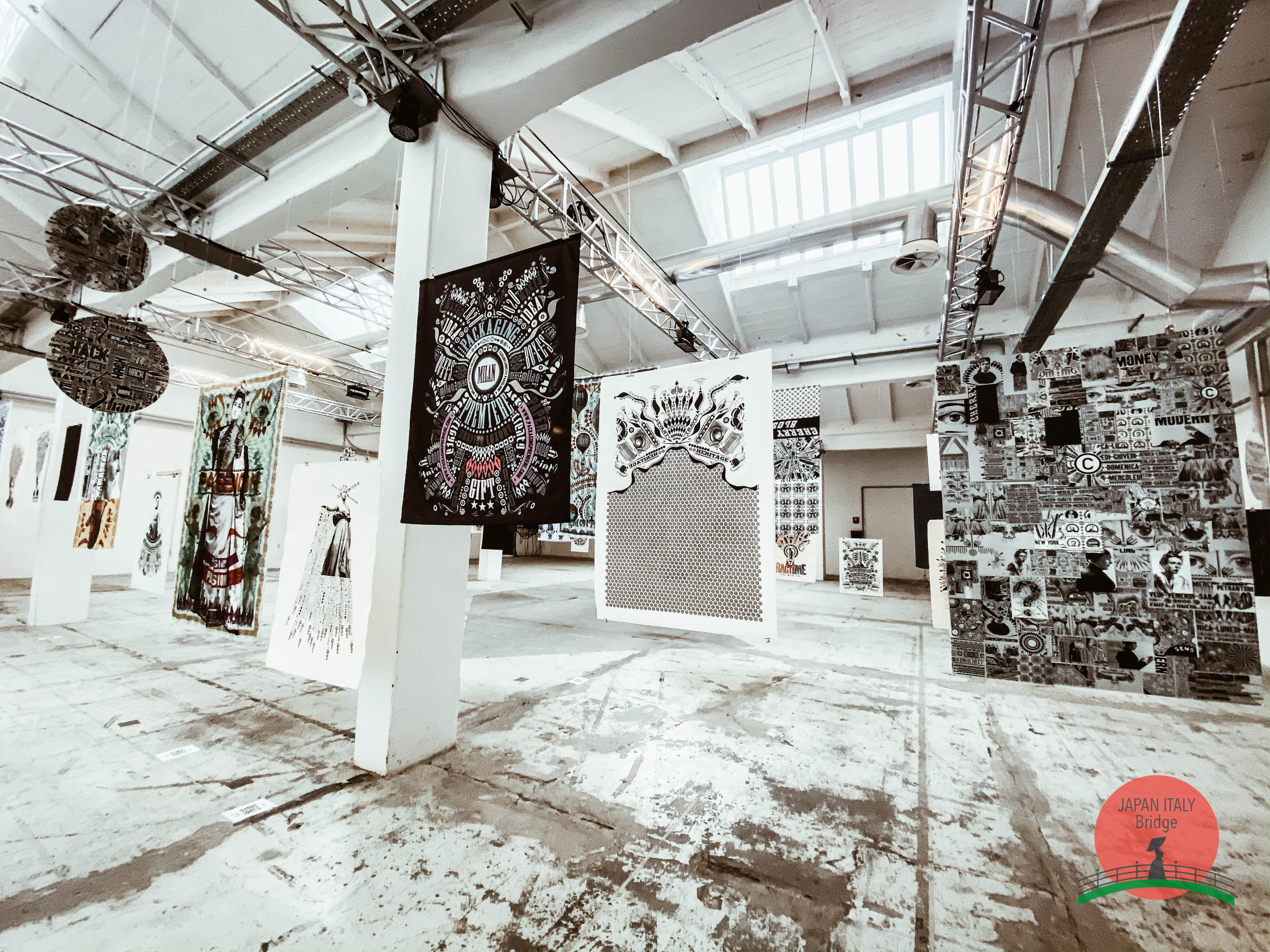
Lorenzo Petrantoni now lives in Milan and is a member of the 59ème Demi Brigade de Ligne de Marengo. He was born in Genoa in 1970 and after studying graphic design in Milan, he worked as art director at Young & Rubicam in Paris. When the artist returned to Italy, he continued to collaborate with some of the largest communication agencies, and then dedicated himself completely to illustration. His illustrations are the result of a combination of nineteenth-century graphics and art, with images from old manuals and dictionaries from the nineteenth century that he collected during his travels. His illustrations, with their being unmistakable, give new life to words, events and characters of other times. Lorenzo Petrantoni, with his art, has created campaigns for prestigious brands, collaborated with international magazines and exhibited in numerous exhibitions around the world. Now is the moment of TENOHA Milan and you can experience this great artist and his very special art for a limited period of time. What are you waiting for? Don't miss this opportunity!
Details
When: from October 7 till the end of December, from 11:00 to 19:00.
Where: TENOHA & | DISCOVER - TENOHA MILANO — Via Vigevano, 18, 20144 Milano
Cost: free
Nada no Kenka Matsuri
From October 14th to 15th of each year, in the Matubata Hachiman Shrine (松原八幡神社) in the city of Shirahama in Himeji, Hyogo Prefecture, the Nada no Kenka Matsuri (灘のけんか祭り) one of the biggest autumn festivals in Japan is held.
Nada no Kenka Matsuri, Fighting for blessings
Author: Sara
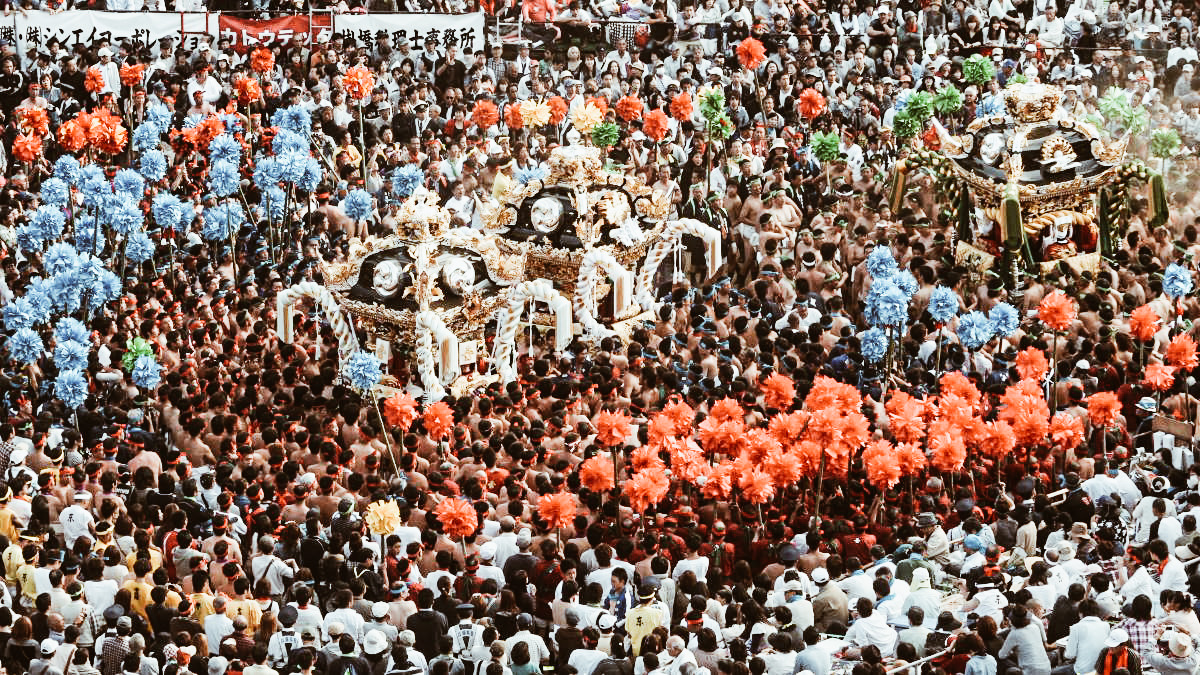
photo credits: armidaleexpress.com.au
The term "kenka"(けんか) contained in the name of the Festival means "to fight", for this reason, in the current language, it is defined as "the Festival of the fight" in which the Kami (the gods) will bless the winner of the fight with a good harvest. Given the impetuousness with which it takes place, only high school boys and men up to the age of 45 can participate in the event according to Shinto tradition. In addition, participants must belong to 7 specific villages: Higashiyama (東山), Kiba (木場), Matsubara (松原), Yaka (八家), Mega (妻鹿), Usazaki (宇佐崎), Nakamura (中村).
October 14: The Eve "Yoi-Miya" (宵宮)

photo credits: armidaleexpress.com.au
At 11:00 am everything is ready for the "Neri-dashi" parade (練りだし). The 7 Yatai (small sacred floats) from the 7 villages go to the Matubata Hachiman Shrine to receive the divine blessing, "Miya-Iri" (宮入). Here the Yatai compete in the first competition called "Neri-Awase" (練り合わせ), competing against each other. A sort of "preparation" because the real "fight" will take place the next day and will be even more difficult. At this point, the "Shishimai" takes place: a dragon dance in front of the elementary school of Shirahama.
October 15: Hon-Miya the heavy Yatai clash

photo credits: diversity-finder.net
The main event of the Festival starts at 5:00 am. The lion of the village of Matsubara (松原の獅子) celebrates the dragon dance at the Sanctuary to worship the gods. Afterwards, the ceremony moves to the ocean where the participants of the villages eliminate their impurities of the spirit by bathing in cold water (Osogi 禊). At this point, the Miya-Iri (opening ceremony) at the Matubata Hachiman Shrine is started with the blessing of the gods. At last, the thinking confrontation begins: the first are the 3 Mikoshi (the least expensive portable sanctuaries of the Yatai) of the village in charge of hosting the festival (every year the place changes alternating between the 7 villages).
The first Mikoshi (一の丸) is very heavy and is carried by men over 36 years old. The second (二の丸) is a bit lighter and is carried by men between 26 and 35 years old. The third Mikoshi (三の丸) is very light and is worn by men under 25 years old.
They fight each other twice (神輿合わせ, mikoshi-awase): first in front of the main building of the Sanctuary, then in the battlefield at the foot of Mount O-Tabi-Yama (御旅山). At the end of this clash, it is the Yatai's turn on the battlefield (Neri-awase 練り合わせ).
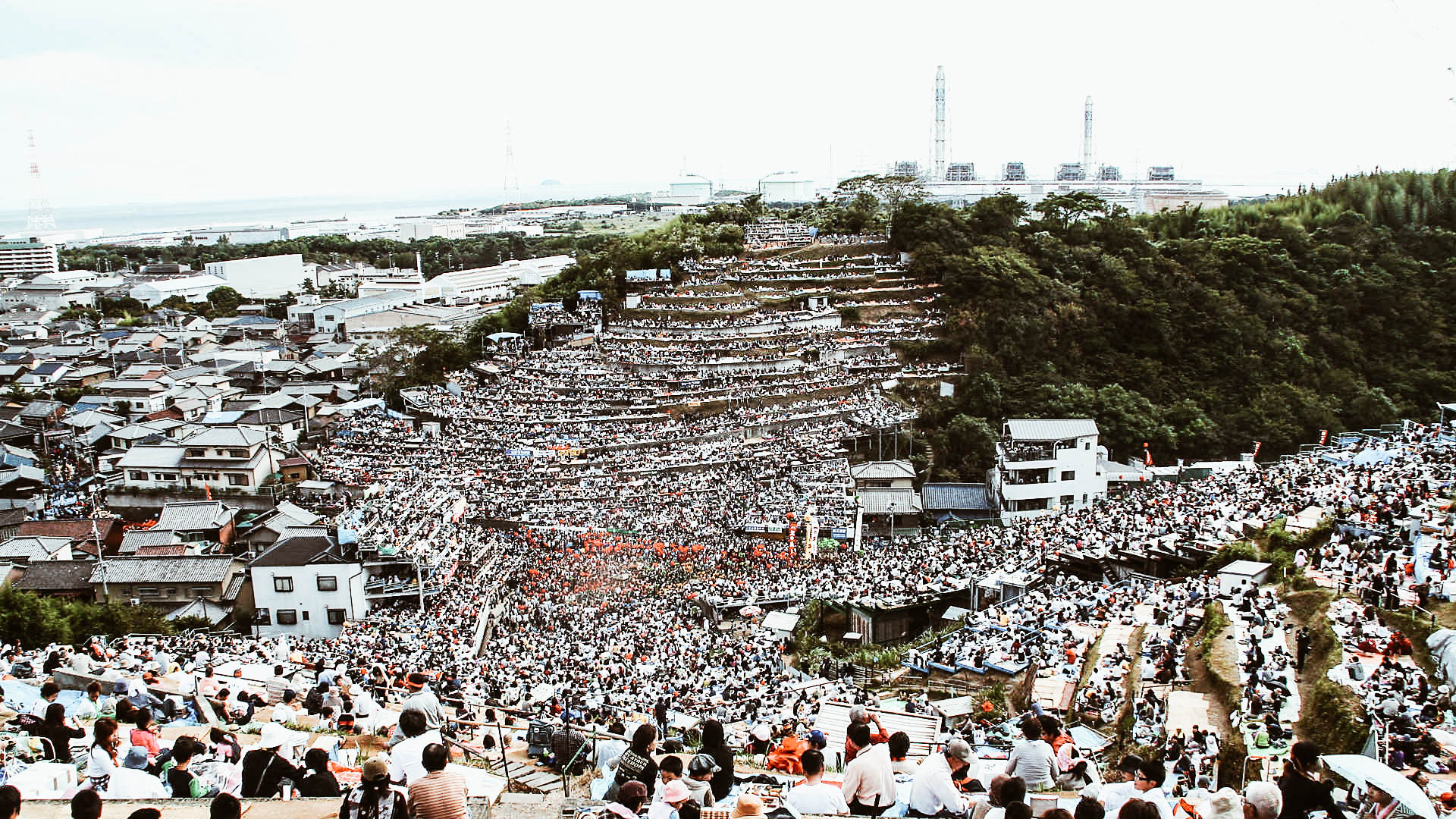
photo credits: kabegami.image.coocan.jp
The excited cries of spectators and participants make the event particularly lively and full of passion. At the end of the battle, the 3 Mikoshi and 7 Yatai are taken to the top of the mountain where prayers are said. the Nada no Kenka Matsuri ends with the descent from the mountain which will take place in the same order in which the villages have climbed.
TENOHA & | WORKSHOP: SHIBORI with Aki Takeshita
Another special workshop at TENOHA Milano, another piece of Japan available for us: the SHIBORI with Aki Takeshita! A small recap to remind you what SHIBORI is: thanks to this Japanese technique, we can create a work with our hands giving space to our imagination and why not? Show it off and live it!
Shibori workshop with Aki Takeshita @ TENOHA Milano
Author: SaiKaiAngel
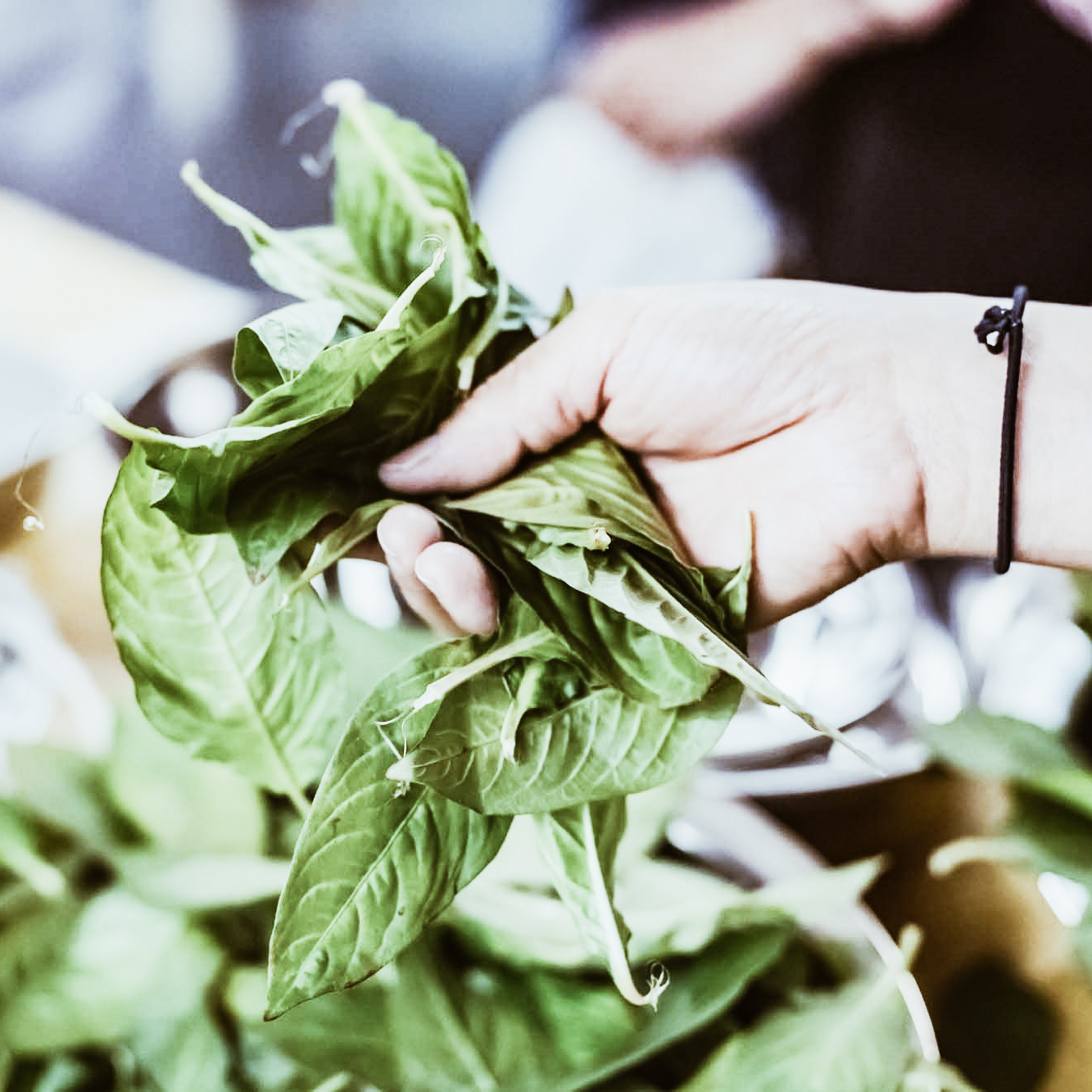
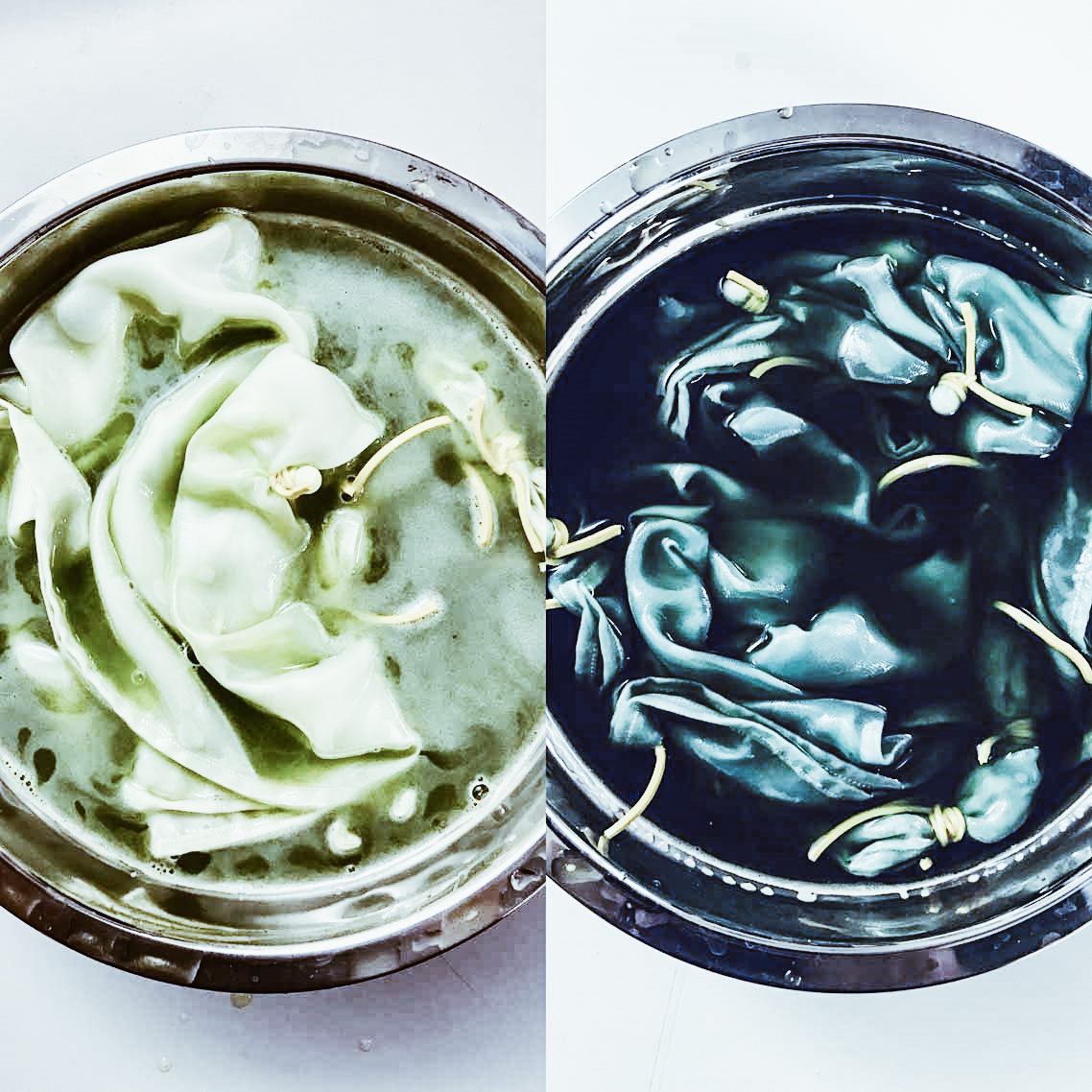
SHIBORI is an ancient Japanese technique that thanks to the binding and folding of the fabric with threads, elastics and pieces of wood, allows us to give life to real works of art, absolutely personal. Aki Takeshita will take us to the total discovery of SHIBORI to give space to our imagination and create new and personal ones.
Who is Aki Takeshita?


He is an artist born in Kyoto in 1983 who graduated in Textile Design at Tama Art University in Tokyo and then specialized in Shibori thanks to many specialization courses. Since 2014 he is a freelancer between Tokyo and Milan, where he lives. Aki Takeshita now organizes dyeing course with this technique also in Milan.

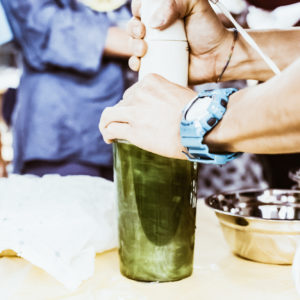

Do you want to live another unique experience and feel like you are in Japan without taking the plane? Come and get to discover this technique! We are sure you will love it!
Details
When: October 10th
#1 turn 10:00 - 13:00
#2 turn 15:00 -18:00 (only if there are other requests)
Where: TENOHA & | WORK ℅ TENOHA MILANO — Via Vigevano, 18, 20144 Milano
Cost: 60 €
Seats: 10 max
Business Focus: Influencer Marketing in Japan, 5 things to know
We have all heard of Influencer Marketing but what are the differences in Japan?
Japan Italy Bridge offers services to companies in the field of Digital Marketing and events. Many Italian companies that have requested our promotion services towards the Japanese market, asked us what are the differences between the two countries regarding Influencer Marketing.
Influencer Marketing in Japan: 5 things to know
Author: Erika
For those who do not know what Influencer Marketing is, we are talking about a branch of marketing that benefits from the use of bloggers and influencers with a specific target audience.
Nowadays, this strategy is one of the most effective methods in most markets, this also applies to the Japanese one. In fact, Influencer Marketing in Japan plays a big role but the rules are different than in Western countries.
Today we share with you 5 differences to help you understand better.
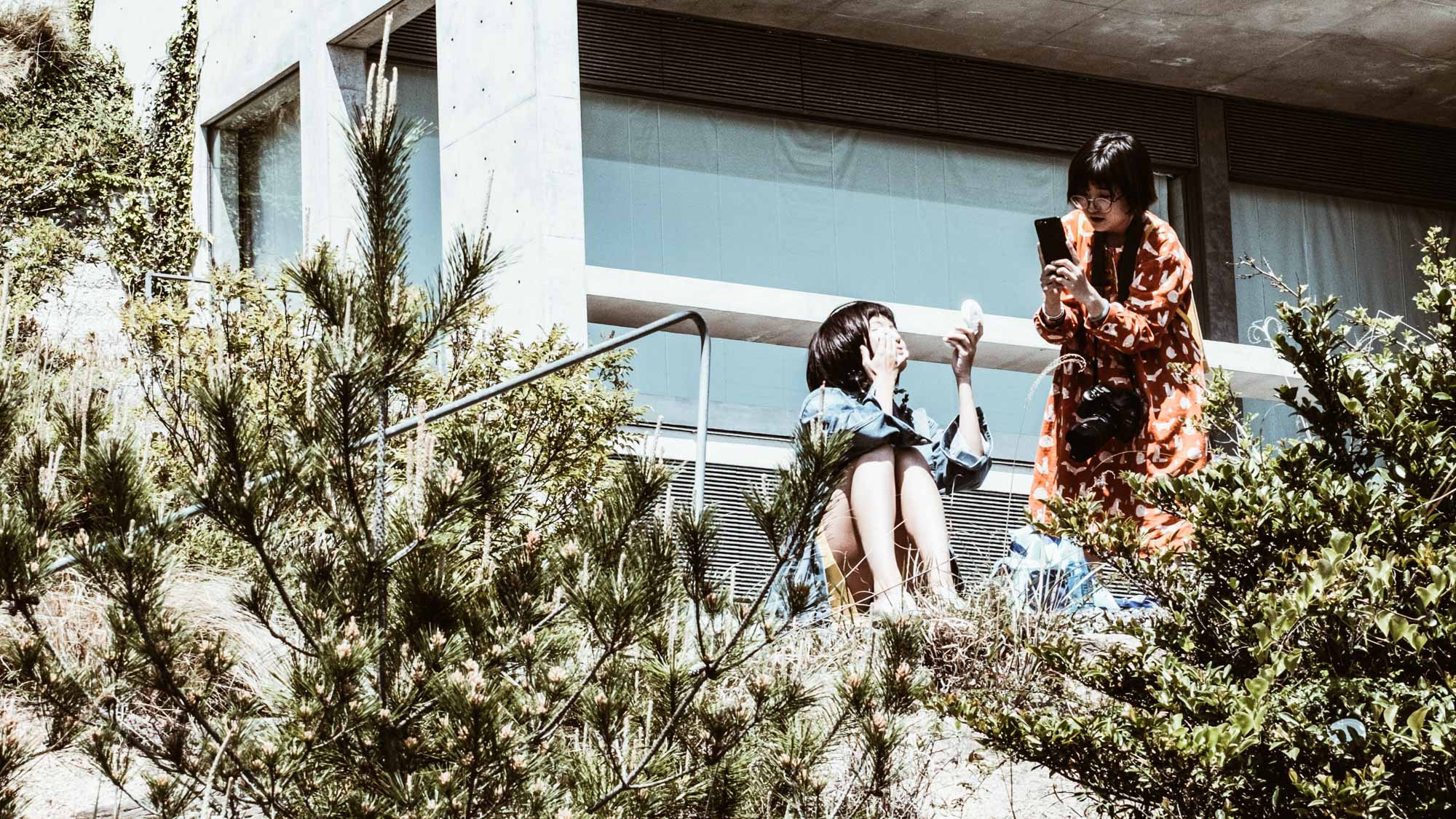
The language barrier
One of the aspects of Japanese social media and therefore also of Influencer Marketing is that everything must be done in their language. Unfortunately, Japan is ranked 49th among the 88 countries and regions in the ranking of English language study and knowledge. A lack of expertise when you think about how much Japanese use social media to get informed and communicate.
Because of this, classic global influencers such as Chiara Ferragni, Cameron Dallas and others are not as influential as they are in other countries accustomed to the English language. In fact, sometimes they are almost unknown even compared to local influencers with fewer followers.
This leads to a big dilemma for companies: to use local influencers or completely ignore the Japanese market? True, the Japanese market is now not as profitable as the Chinese one. However, Japan is ranked 3rd in the GDP world ranking and this is too important to completely ignore this country and its audience.
As said before, it is true, Japanese Influencers have fewer followers than global ones. However, precisely because they speak in a language closely related to the culture of the Rising Sun, this leads them to not have many followers in the rest of the world.
What we can understand from this data, however, is that in this case engagement becomes extremely important. In fact, Japanese influencers are extremely connected to their audience and the interactions far exceed those of the westerners one.
Japanese hashtags require a cultural background
When a company opens to the Japanese market, it must understand the uniqueness of this country and its culture. It is therefore important to work with correct hashtags and use them properly. This will lead us to find the target community that we can approach and get a return on our investment.
Influencers and micro-influencers can be found using hashtags. However, finding the correct Japanese hashtag is not so easy for those who do not speak the language and do not know the culture. Moreover, very often the most common hashtags are neologisms.
For example #インク沼 is a direct translation of "Bottomless Swamp of Ink". Apparently, this doesn't make any sense, except that "Bottomless swamp of something" is an internet slang used a lot by Japanese people to describe when someone is really passionate about something. However, if we take away the cultural background, this hashtag completely loses its meaning.
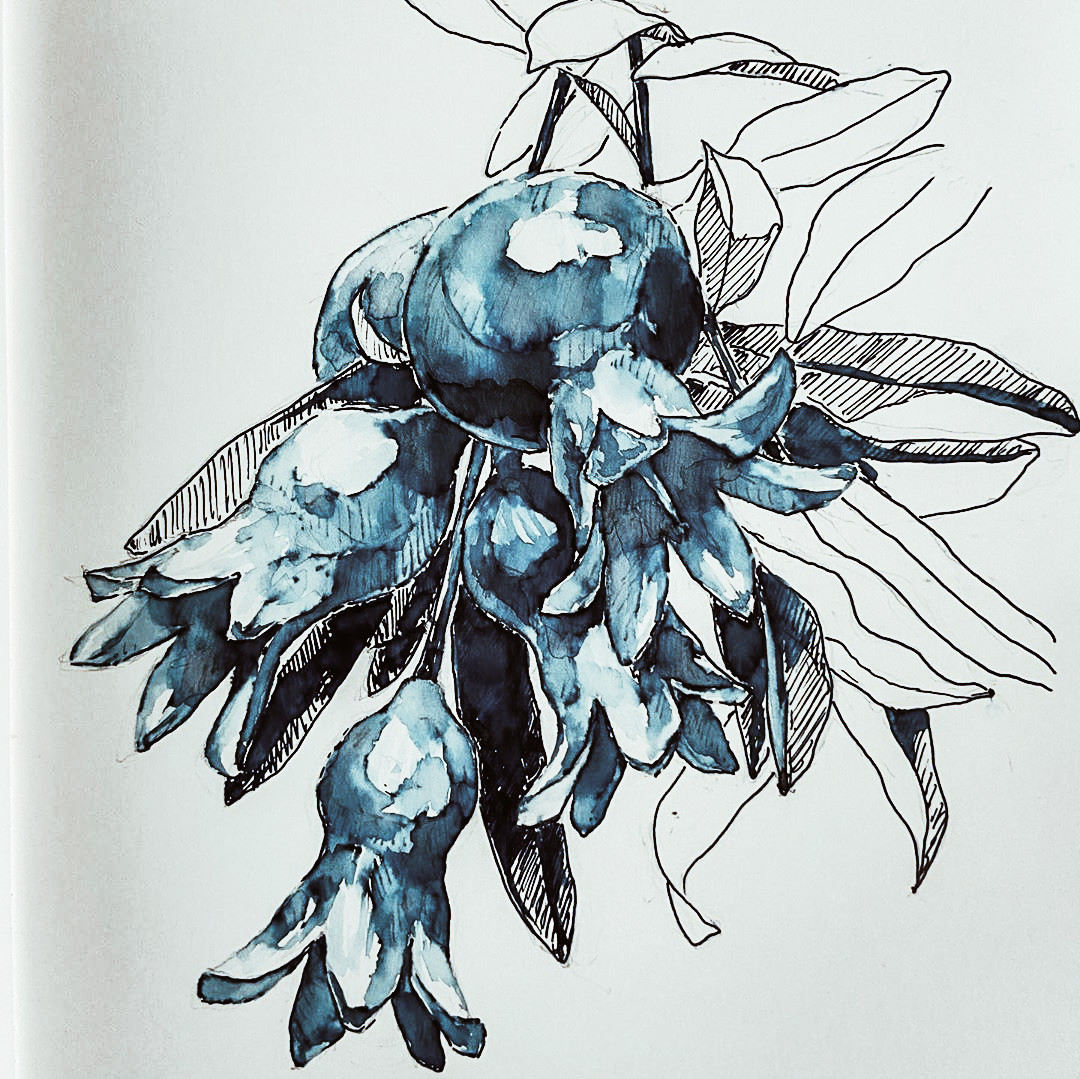
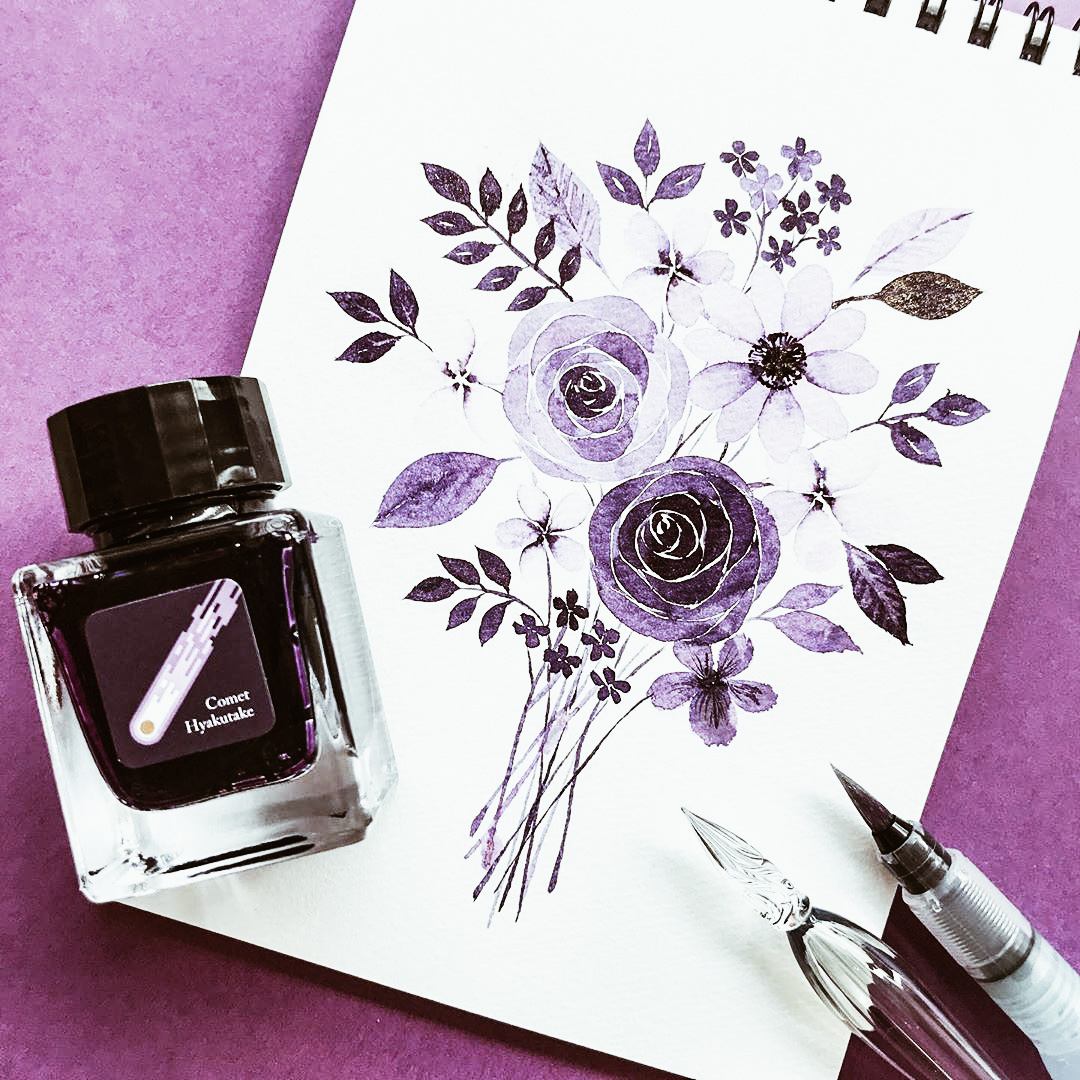

photo credits: @v_sarasara, @tommy_notes_16 , @mizuki___iz
In addition, Japanese hashtags can often be very complicated for a Western eye to understand. This happens because of the three ways of writing the language, namely the mix of Kanji, Hiragana and Katakana.
So when we use Japanese hashtags, we have to be careful how they are written because the combination of the three ways can bring different meaning. In the language of internet, a hashtag written in a different way also brings different results on an audience level. In fact, this can affect the number of people we might reach.
Influencers in Japan are distributed on different platforms
Even in the West, it is rare that an influencer has the same strength on all the most popular social platforms. Many are popular only on Instagram, others only on Tik Tok or Twitter. This has even more effect in Japan with the presence of some specific platforms for Japanese culture. For example, we have NewsPicks that interfaces with a purely corporate audience. While note is a social dedicated entirely to the content creators such as stories, tutorials, news blogs and especially manga.
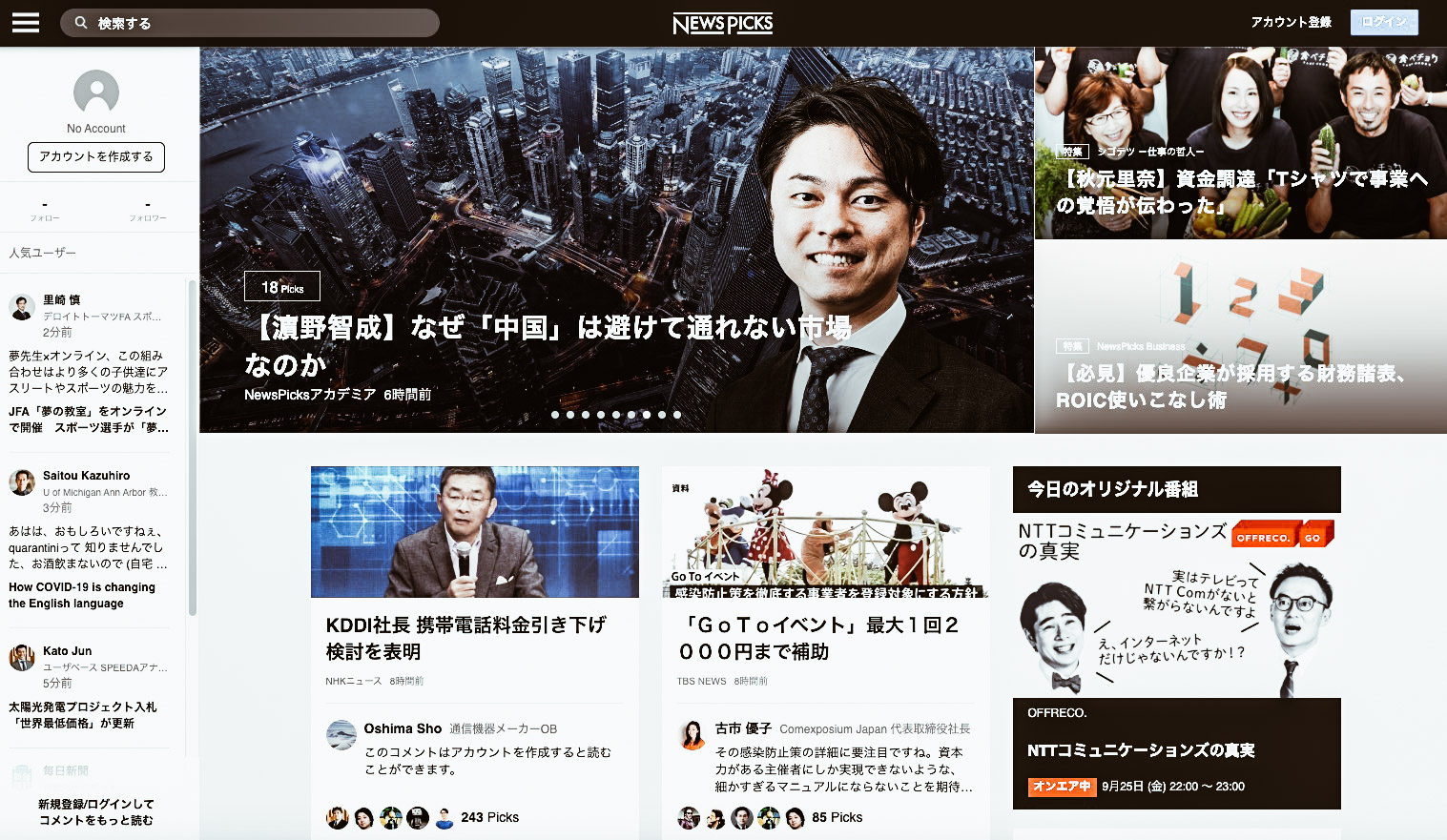
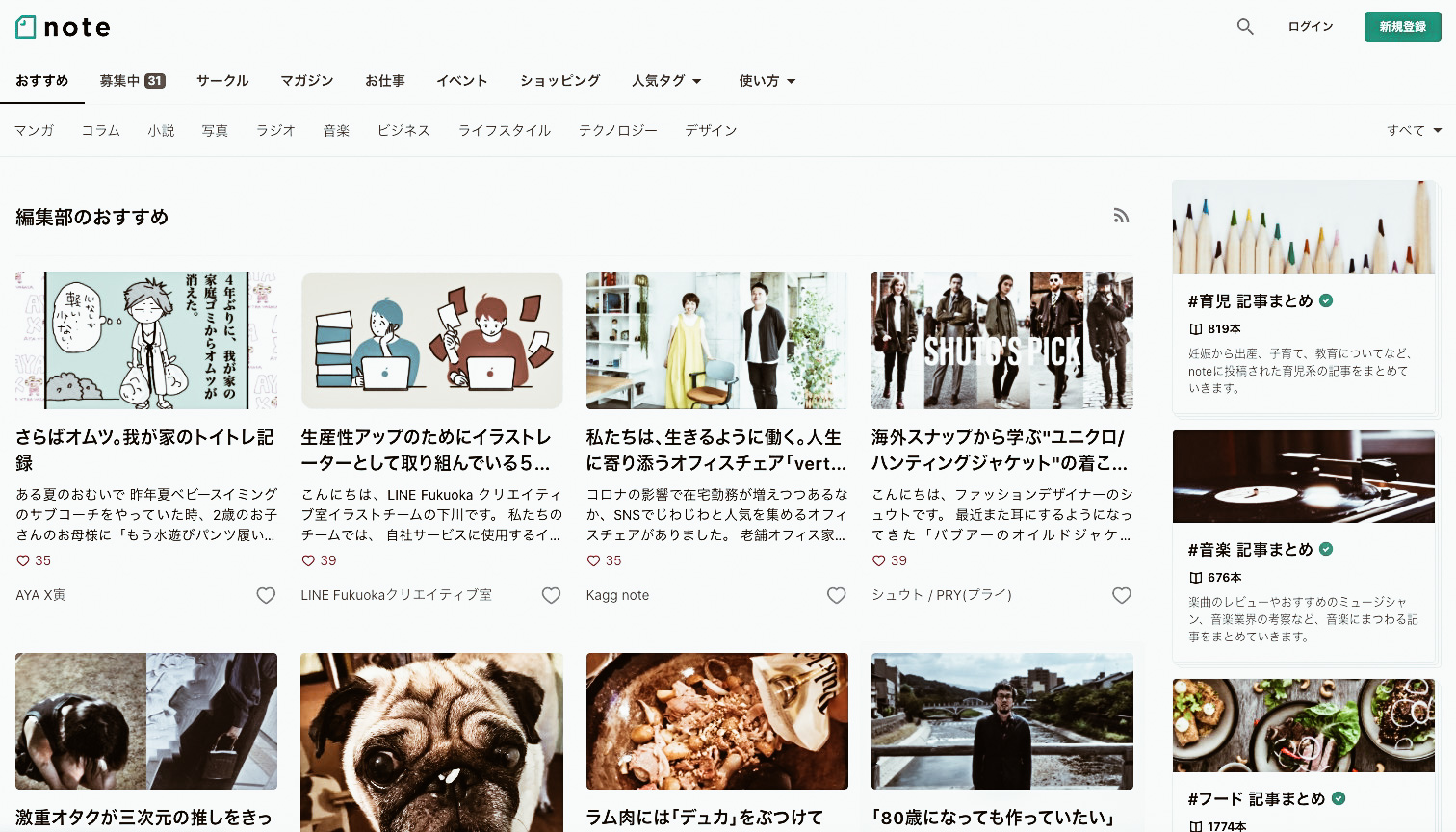
The top Influencers and agencies
As it also happens in the West, many Japanese influencers are followed by some agencies when they start to become popular. At the moment, unfortunately, there are few influencers who work freelance. So, if you want to work with an influencer who belongs to an agency, you have to go through the agency itself.
All this has its pros and cons.
Pros.
- Access to major influencers
- You save time in finding the right influencer since agencies like ours cover this part of the work for you.
- The agency negotiates contracts and fees
In this case, the work of the agency therefore becomes a benefit for the company that finds itself having a job tailored to its interests.
Cons.
- Higher costs
- Minor flexibility
- Direct contacts of influencers remain private
Unfortunately, when using an agency you have to comply with the rules of the agency and these vary from agency to agency.
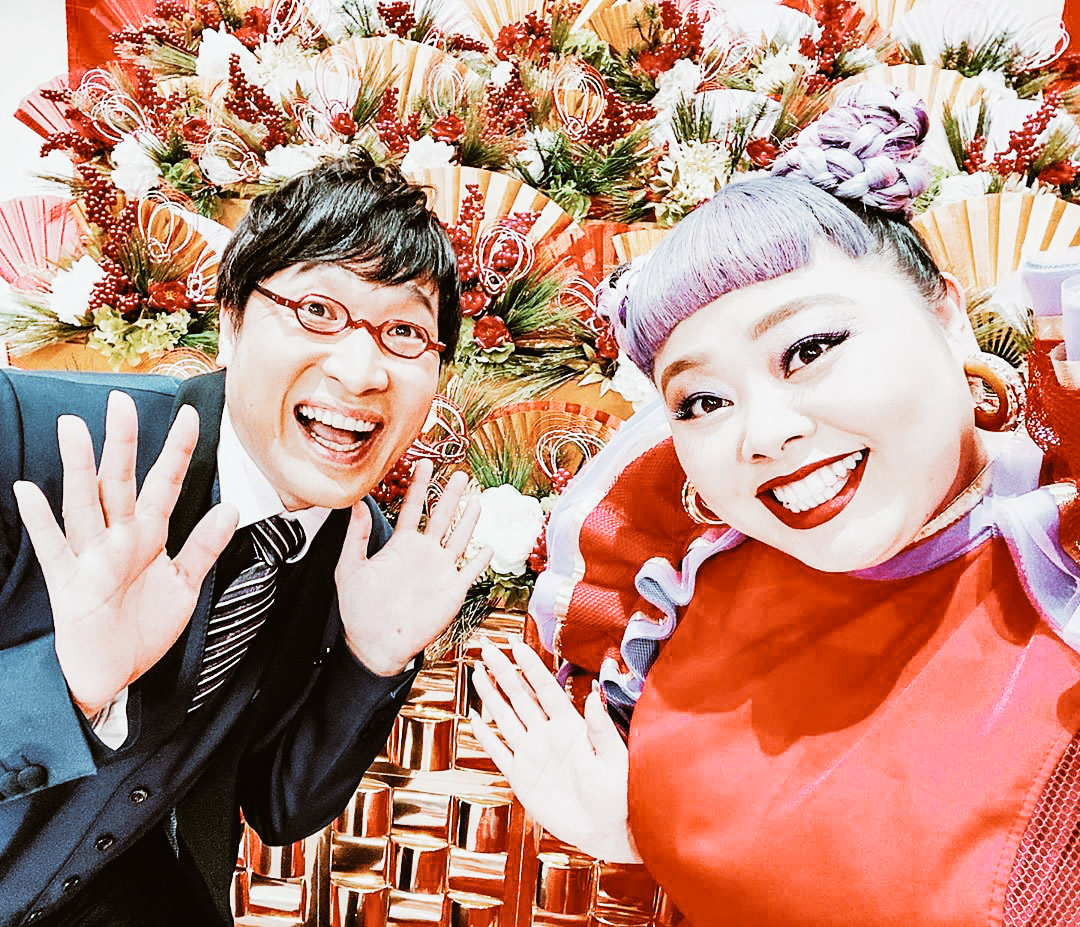

photo credits: @watanabenaomi703 , @rolaofficial
Undisclosed paid posts
Japanese people are very strict when it comes to honesty and transparency. This severity is also applied in Influencer Marketing in Japan. In fact, when paid posts from influencers not reported as such, they tend to be ignored by the public and give a bad impression.
However, there are no direct laws governing the transparency of an Influencer-sponsored post in Japan. In addition, not all influencers are aware of the right way to communicate a partnership.
For a company, it is therefore very important to educate the chosen influencers and not to work randomly to get impressions.
In the West, we now have clear guidelines on the use of sponsorship through Influencer Marketing and these should also be used for collaborations with Japanese Influencers.
If you liked this and our other articles, join our newsletter to receive exclusive updates and many new articles.















